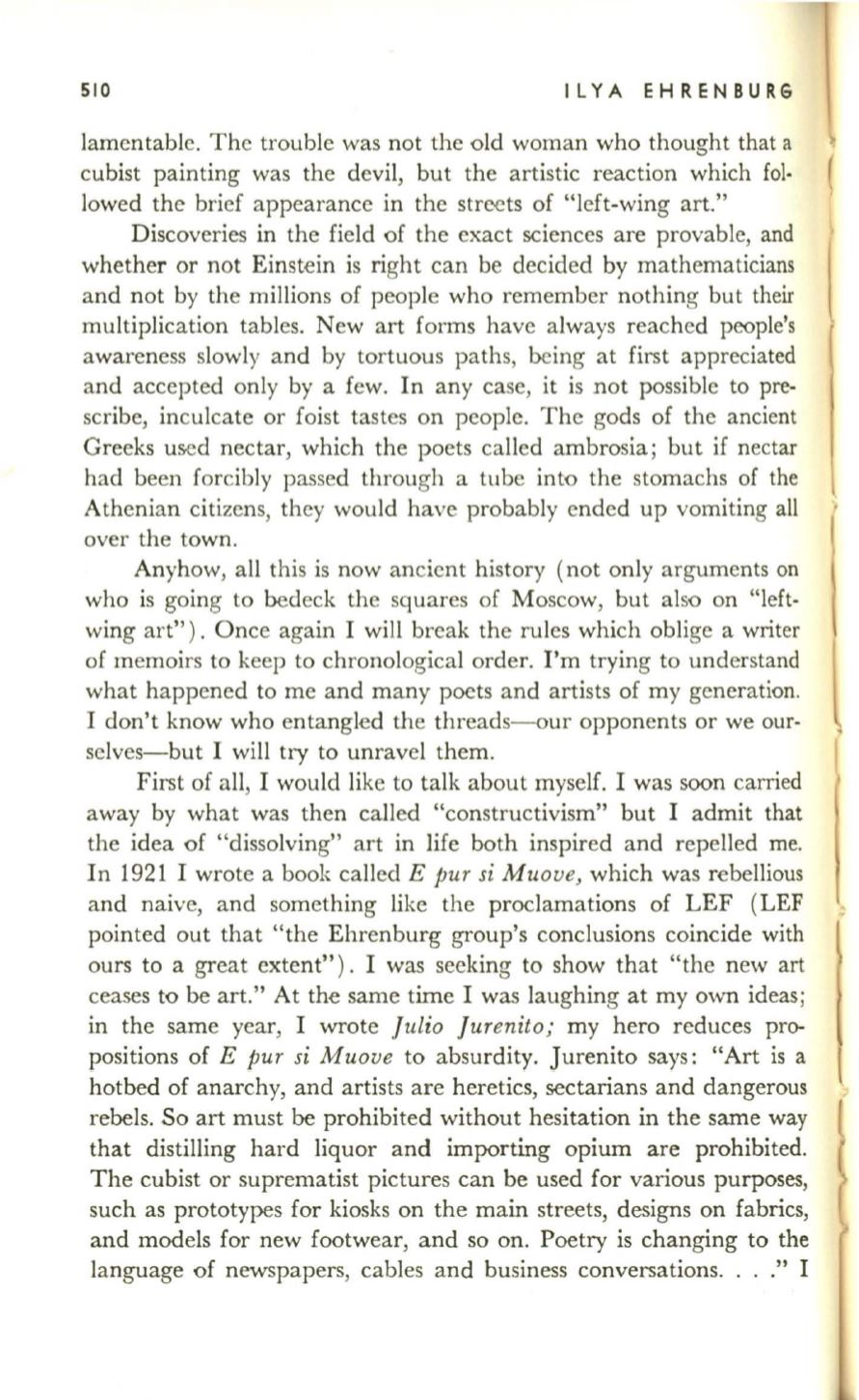
510
ILYA EHRENBURG
lamentable. The trouble was not the old woman who thought that a
cubist painting was the devil, but the artistic reaction which fol–
lowed the brief appearance in the streets of "left-wing art."
Discoveries in the field of the exact sciences are provable, and
whether or not Einstein is right can be decided by mathematicians
and not by the millions of people who remember nothing but their
multiplication tables. New art forms have always reached people's
awareness slowly and by tortuous paths, being at first appreciated
and accepted only by a few. In any case, it is not possible to pre–
scribe, inculcate or foist tastes on people. The gods of the ancient
Greeks used nectar, which the poets called ambrosia; but if nectar
had been forcibly passed through a tube into the stomachs of the
Athenian citizens, they would have probably ended up vomiting all
over the town.
Anyhow, all this is now ancient history (not only arguments on
who is going to bedeck the squares of Moscow, but also on "left–
wing art"). Once again I will break the rules which oblige a writer
of memoirs to keep to chronological order. I'm trying to understand
what happened to me and many poets and artists of my generation.
I don't know who entangled the threads-our opponents or we our–
selves-but I will try to unravel them.
First of all, I would like to talk about myself. I was soon carried
away by what was then called "constructivism" but I admit that
the idea of "dissolving" art in life both inspired and repelled me.
In 1921 I wrote a book called
E pur si Muove,
which was rebellious
and naive, and something like the proclamations of LEF (LEF
pointed out that "the Ehrenburg group's conclusions coincide with
ours to a great extent"). I was seeking to show that "the new art
ceases to be art." At the same time I was laughing at my own ideas;
in the same year, I wrote
Julio Jurenito;
my hero reduces pre–
positions of
E pur si M uove
to absurdity.
J
urenito says: "Art is a
hotbed of anarchy, and artists are heretics, sectarians and dangerous
rebels. So art must
be
prohibited without hesitation in the same way
that distilling hard liquor and importing opium are prohibited.
The cubist or suprematist pictures can be used for various purposes,
such as prototypes for kiosks on the main streets, designs on fabrics,
and models for new footwear, and so on. Poetry is changing to the
language of newspapers, cables and business conversations...." I
I
t
"I
I
\
\


